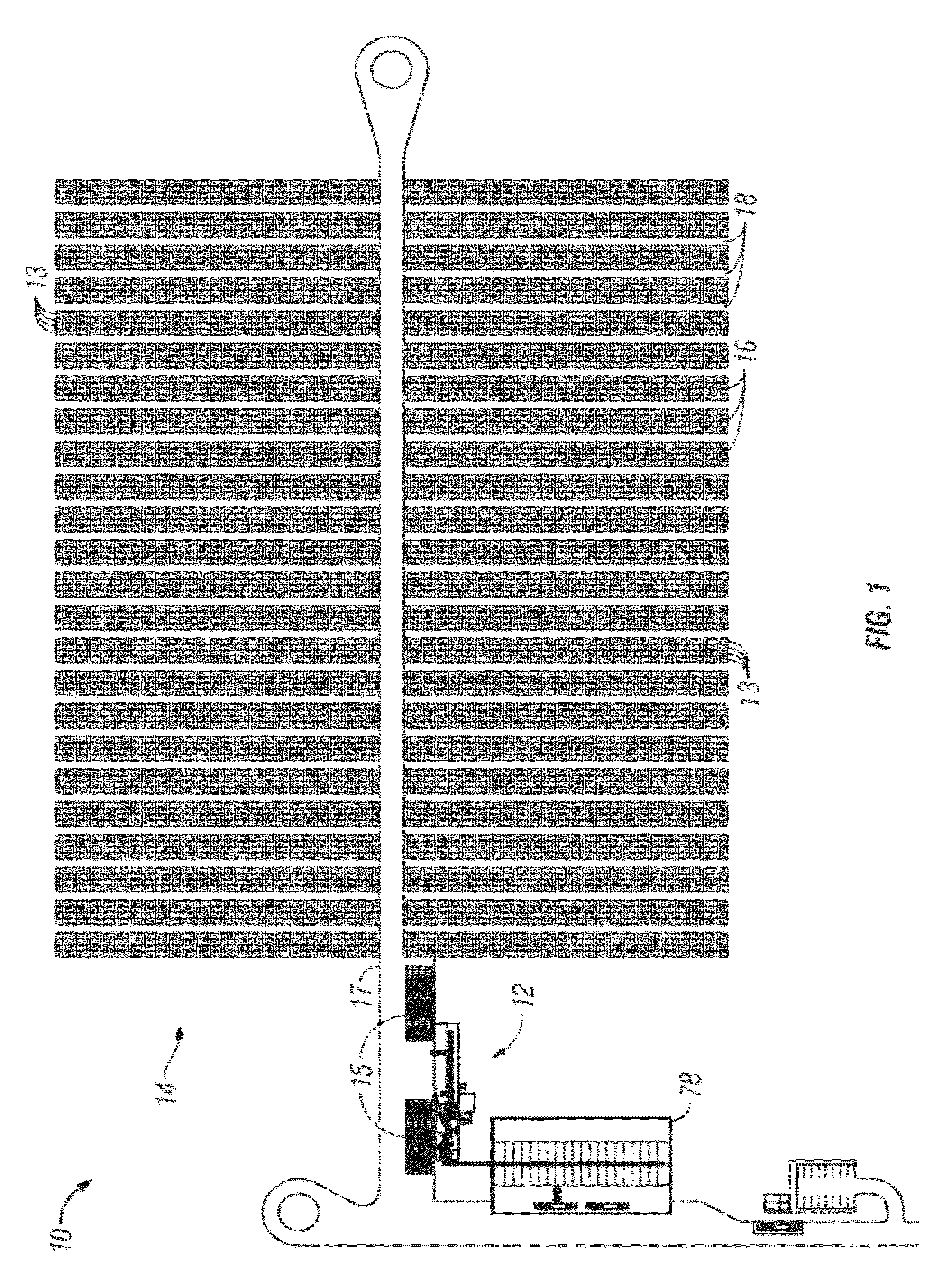Automated process for handling bales for pellet production
a technology of automatic processing and pellet production, which is applied in the field of automatic processing, can solve the problems of high capital and operating costs, inability to bring to market meaningful volumes of cellulosic biomass agriculture materials on a commercial scale, and inability to meet the needs of large-scale production, etc., and achieves the effects of efficient handling, unloading, and unloading
- Summary
- Abstract
- Description
- Claims
- Application Information
AI Technical Summary
Benefits of technology
Problems solved by technology
Method used
Image
Examples
Embodiment Construction
[0022]The automated system and process for handling plant material bales is intended for use at a pellet production or other plant material processing facility 10, such as shown in FIG. 1, as described in Applicants' co-pending priority application. In this facility 10, plant material bales, no. 13 in FIG. 1, are received on flatbed trucks from the harvest field, unloaded by the truck's hydraulic lift or removed from the trucks with telehandlers depending on type of truck used, and stacked in a storage area 14 or staged in a staging area 15 adjacent to the pelletizing process area 12.
[0023]The receiving and storage process is designed for receiving 3′×4′×8′ bale, no. 13 in FIG. 1. The bales, no. 13 in FIG. 1, are stored either in bale staging stacks 15 adjacent to the processing area 12 or in storage stacks 16 in the storage area 14 for longer-term storage, with the appropriate buffer rows 18 or borders. A driveway 17 is provided between the opposite rows of stacks, as seen in FIG. ...
PUM
| Property | Measurement | Unit |
|---|---|---|
| time | aaaaa | aaaaa |
| area | aaaaa | aaaaa |
| volumes | aaaaa | aaaaa |
Abstract
Description
Claims
Application Information
 Login to View More
Login to View More - R&D
- Intellectual Property
- Life Sciences
- Materials
- Tech Scout
- Unparalleled Data Quality
- Higher Quality Content
- 60% Fewer Hallucinations
Browse by: Latest US Patents, China's latest patents, Technical Efficacy Thesaurus, Application Domain, Technology Topic, Popular Technical Reports.
© 2025 PatSnap. All rights reserved.Legal|Privacy policy|Modern Slavery Act Transparency Statement|Sitemap|About US| Contact US: help@patsnap.com



